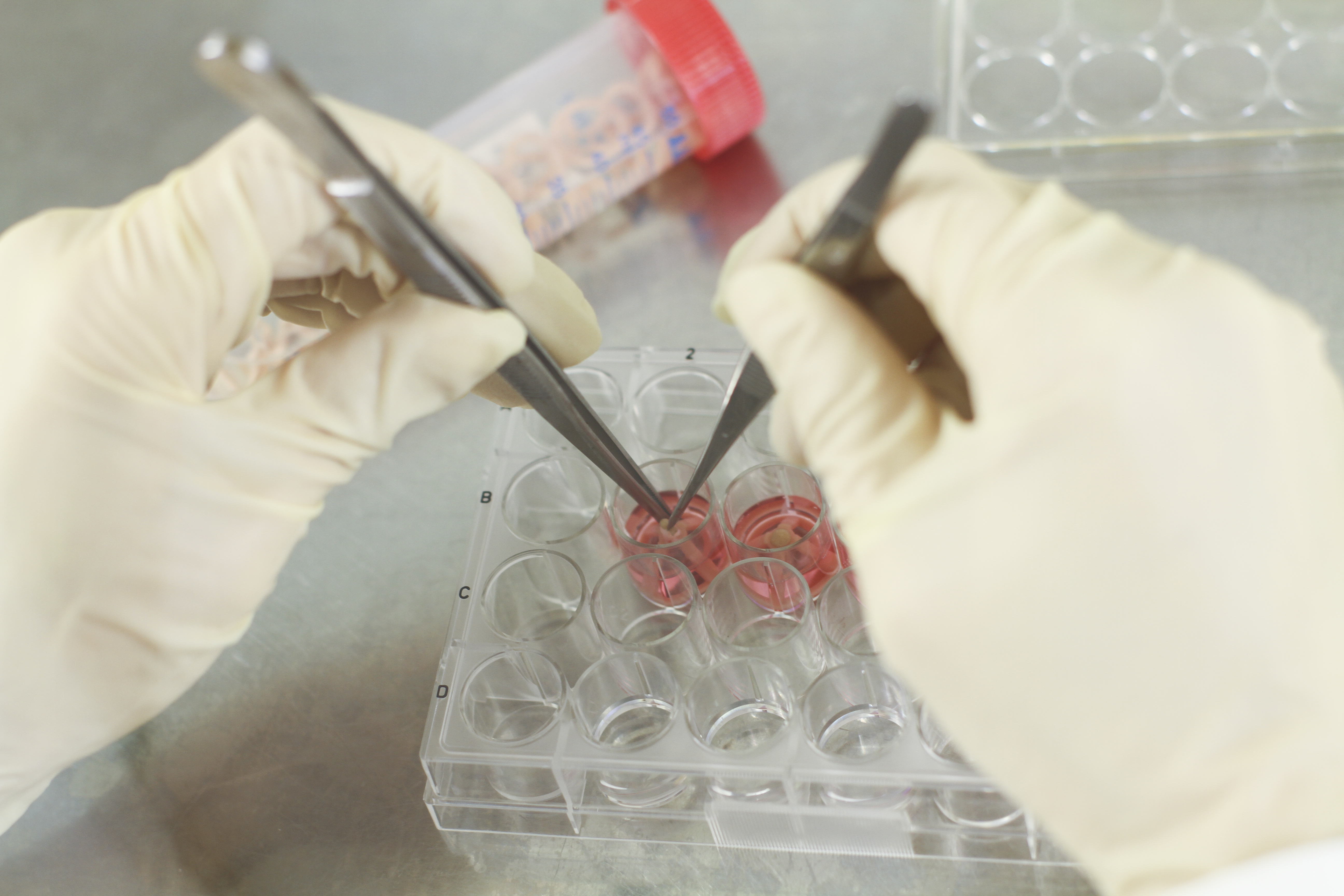Workspace

With human stem cells from sweat glands, the Cell Differentiation working group was able to open up a new cell source for regenerative medicine. The particular advantage of sweat gland-derived stem cells is their easy accessibility and ethical harmlessness. Animal experiments have already shown a positive effect on wound healing. In particular, the formation of new blood vessels (revascularisation) could be accelerated with stem cell treatment in animal experiments. Studies have shown that the effect of the stem cells is largely due to soluble (paracrine) factors which are released by the stem cells in the wound environment. Coculture studies have also shown that stem cells have a positive effect on the regeneration of peripheral nerves. The stem cells thus enhance natural wound healing many times over. In future, stem cells from sweat glands are to be made available for clinical applications. Another research area of the cell differentiation working group is the development of new in vitro test systems. Due to the EU-wide ban on animal testing for applications in the cosmetics industry as well as the strong demand for aluminium-free deodorants, the need for new in vitro skin test systems has risen sharply in recent years. Due to the long-standing and globally unique expertise in the field of stem cell isolation from glands and the production of organoids, cell technological know-how is available that can be used for the development of new test systems.